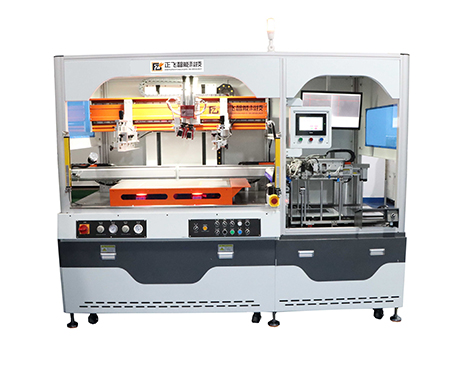In the multi-product application scenarios of automatic screen printing machines, changing lines and models is a common operation. Whether to re-adjust the mold depends on the degree of change in multiple factors such as the shape, size, fixture, screen and printed content of the product. Overall, in most cases, when changing production lines, moderate mold adjustment operations are required to ensure that the equipment operates stably and meets the precision standards under the new product conditions.
The difference in product structure determines the adjustment range
If the shape, clamping method or printing area of the new product differs significantly from the previous one, adjustments need to be made to the positioning device, fixture position, working platform height and other parts of the automatic screen printing machine. For instance, when switching from a flat part to an curved or irregular-shaped part, not adjusting the mold may cause printing misalignment or interference from the squeegee.
2. When changing the screen and pattern content, the positions need to be adjusted simultaneously
Even if the product structure is the same, if new patterns or logos, numbers and other contents at different positions are changed, the starting point and ink application area of the scraping still need to be reset. Some automatic screen printing machines are equipped with an X-Y-Z three-axis fine-tuning platform, which can quickly complete mold adjustment through parameter setting and improve the efficiency of line changing.

3. Changes in fixtures or jigs require precision reset
When switching products, if different fixtures or suction cup modules need to be used, recalibrate the fixture position and photoelectric alignment points to avoid misdelivery or printing errors. In addition, the replacement of fixtures is usually accompanied by the reset of vacuum adsorption and mechanical clamping force to match the weight and material of the product.
4. The automatic feeding, positioning and printing rhythms need to be adapted to the new rhythm
For on-screen printing machines or those equipped with automatic loading and unloading mechanisms, when changing production lines, it is necessary to synchronously adjust the cycle logic, the dwell time at each workstation, and the program switching. Some devices support batch storage of printing parameter schemes, which can be called up with one click without the need for manual mold adjustment again.
5. The complexity of mold adjustment is related to the model of the equipment
If the device supports a quick mold-changing platform, pattern memory function or visual assistance alignment system, the mold adjustment process will be relatively simple. Mid-to-low-end models may require manual calibration, which takes a relatively long time.
When changing production lines, automatic screen printing machines usually require mold adjustment operations of varying degrees. The mold adjustment content includes multiple links such as mechanical structure adjustment, printing parameter setting, and pattern positioning correction. To enhance the conversion efficiency of the production line, it is recommended that when selecting equipment, one consider whether it has intelligent memory function, multi-segment product parameter storage capability and rapid mold change design, so as to meet the flexible production requirements of multiple varieties and small and medium batches.